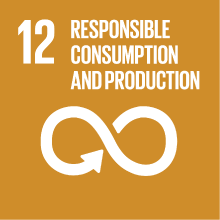WAVE PROPAGATION INTO MATERIALS WITH LABORATORY
- Academic year
- 2020/2021 Syllabus of previous years
- Official course title
- PROPAGAZIONE DI ONDE NEI MATERIALI E LABORATORIO
- Course code
- CT0418 (AF:283592 AR:169478)
- Teaching language
- Italian
- Modality
- On campus classes
- ECTS credits
- 6
- Degree level
- Bachelor's Degree Programme
- Academic Discipline
- FIS/01
- Period
- 1st Semester
- Course year
- 3
- Where
- VENEZIA
- Moodle
- Go to Moodle page
Contribution of the course to the overall degree programme goals
The instructional goals of the course are:
1) development of the capability to apply to the study of materials the physical theories that describe the interaction of radiation with matter and its propagation;
2) development of a correct use of different and complementary approaches in the description of the physical and chemical properties depending on the wave propagation;
3) development of the capability to link concepts and theories to the experimental activity of characterization and study of the materials, also with reference to other courses with experimental character;
4) development of manual skills, familiarity and autonomy in carrying out experimental activity in laboratory, both by oneself and in collaboration within a working group;
5) to acquire familiarity with data processing protocols, as well as with the writing of a scientific report using the appropriate language.
Expected learning outcomes
1.1. To know and understand the main theories which the propagation and the interaction of radiation with matter are based on, from both wave and particle points of view.
1.2. To know and understand the application fields of different approaches based on either semiclassical theories, for example the origin of the refractive index, or the quantum theory, for example the band structure.
1.3. To know the principles of operation and the setting up of the main apparatuses used in the experimental activity of characterization of the materials, concerned with the techniques based on the wave-matter interaction.
2. Capability of applying knowledge and comprehension
2.1. To use the learned laws and concepts in the setting up of experiments for the characterization of materials.
2.2. To use critically the learned laws and concepts in the interpretation of experimental results as well as in the study of the observed features.
3. Capability of judgement
3.1. To evaluate and choose critically the most suitable experimental approaches for the study of the properties of the different materials, pointing out the possible need for complementary techniques to guarantee the logical consistency and the reliability of the study.
3.2. To integrate the study based on the waves propagation with the information obtainable by different approaches, or related to different theoretical frameworks.
3.3. To frame the application potential of the studied materials within a general perspective of integrated sustainability.
4. Communication skills
4.1. To communicate both the knowledge and the effects of its application using the proper scientific language.
4.2. To interact with the teacher and with the other students in a constructive way, in particular during the experimental working groups activity.
5. Capability of learning
5.1. To take comprehensive and rigorous notes, even by the interaction with the other students.
5.2. To properly select the bibliographic references for the study, even by the interaction with the teacher, most of all for those contents that are not easily found in a single textbook.
5.3. To be sufficiently autonomous in the collection and processing of experimental data, both by oneself and within a working group.
Pre-requirements
Contents
Presentation of the course and its contextualization within the learning process. Peculiarities of the course as a curricular one.
RESUMING OF WAVE PHYSICS
Basics about waves: amplitude, frequency, wavelength, intensity, polarization. Plane, spherical, harmonic waves. Longitudinal and transversal mechanical waves. Electromagnetic waves. Spectrum and sources of the e.m. waves, Lambert-Beer law. Fourier expansion. Huygens-Fresnel principle. Wave packets. Basics of diffraction and interference. Diffraction grid.
RADIATION-MATTER INTERACTION AND PROPAGATION INTO THE MATTER
Index of refraction, Snell’s laws, limit angle, complex refractive index, electronic polarizability. Optical anisotropy, ellipsoid of indices. Anisotropy induced by stress or electromagnetic fields. E.m. wave as a collection of photons. Photoelectric effect. Basics of band theory. Interaction of an e.m. wave with dielectric or conductive materials. Light absorption, luminescence, fluorescence, phosphorescence. Non-linear optics: non-linear electric susceptibility, second order non-linearity, second harmonic generation, frequency-mixing, third order non-linearity, non-linear refractive index. The laser, types of laser sources. Scattering of the light: Rayleigh, Mie and Raman scattering. Principles of guided optics: guided modes, optical fibers, methods for preparing and applications of planar light waveguides.
LABORATORY
Experimental apparatuses: monochromators, detectors, sources. Diffraction grid spectroscopy: measurements of emission spectra by heated gases. Use of optical benches for photoluminescence experiments.
Referral texts
P. Mazzoldi, M. Nigro, C. Voci, “Fisica”, Vol. 2 (Elettromagnetismo e Onde), Edizioni EdiSES.
The part concerning the wave-matter interaction and the propagation within the matter is available in a wide bibliography, yet without a single textbook presenting all the course contents. The teacher will therefore address the source to use as reference for any single topic. Suggested general textbooks are:
N.W. Ashcroft, N.D. Mermin, “Solid State Physics”, Cengage Learning, Fort Worth 2003;
K. Nassau, “The Physics and Chemistry of Color - The 15 Causes of Color”, II Ed., Wiley, New York 2000.
Specific material about topics that result difficult to find will be directly provided by the teacher.
Assessment methods
(i) The oral exam consists first of all of a series of questions about all the programme presented in classroom and reported in the “Contents” Section: the student has to demonstrate both his/her acquisition of knowledge and the capability to present it in a formal rigorous way. Second, using the appropriate conceptual tools among those learned during the course, the student will be asked to develop a comprehensive response to a research question concerning the interpretation or the planning of some specific experimental activity. Finally, the student might also be asked to discuss and support the contents of his/her laboratory scientific report. The oral exam will last 30 to 45 minutes, and must be undergone within the official exam sessions. It has a lowest acceptable mark of 16/30 (see the following about the final grade) and a highest achievable mark of 30/30.
(ii) The laboratory part consists of the presentation of a scientific report about the laboratory activity. The report must contain the description of the experimental apparatuses, of the adopted strategies, of the masurements protocols, of the data processing, as well as the final results, including the uncertainty evaluation.
The report will be signed by working groups made of 3-4 students.
The report will be evaluated with a mark varying in the range between –2 and +2, which will be added to the oral examination mark for any of the group members, to get the final grade.
If the final grade does not reach the value of 18/30, the student will repeat either the oral part (if lower than 18/30 and with a report mark not sufficient to reach 18/30), or the laboratory activity and the report preparation (if the oral part is at least 18/30 but the report mark lowers it below 18/30). The laboratory report must be delivered at last on the day of the oral exam.
Type of exam
Teaching methods
a) lecture-style presentations at the blackboard, inegrated by 3 to 6 powerpoint presentations about examples of optical properties of materials;
b) laboratory activity, where the students -in working groups of 3-4 people- acquire familiarity with the various apparatuses and realize the experimental data collection and processing. The students are required to attend at least two thirds of the lessons given in the laboratory.
Furthermore, in the moodle platform of the University are present the didactic material presented as powerpoint projections in the classroom, as well as specific notes prepared by the teacher concerning topics difficult to find (e.g., non-linear optics) and further material (simulations, videos and conferences).
Further information
Accommodation and support services for students with disabilities and students with specific learning impairments:
Ca’ Foscari abides by Italian Law (Law 17/1999; Law 170/2010) regarding support services and accommodation available to students with disabilities. This includes students with mobility, visual, hearing and other disabilities (Law 17/1999), and specific learning impairments (Law 170/2010). In the case of disability or impairment that requires accommodations (i.e., alternate testing, readers, note takers or interpreters) please contact the Disability and Accessibility Offices in Student Services: disabilita@unive.it.
STRUCTURE AND CONTENT OF THE COURSE COULD CHANGE AS A RESULT OF THE COVID-19 EPIDEMIC.
2030 Agenda for Sustainable Development Goals
This subject deals with topics related to the macro-area "Circular economy, innovation, work" and contributes to the achievement of one or more goals of U. N. Agenda for Sustainable Development


